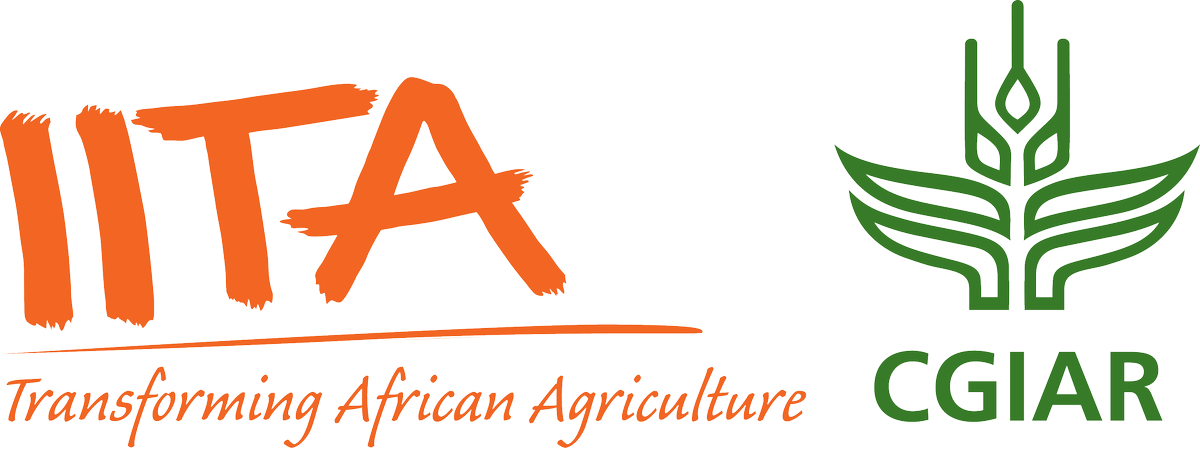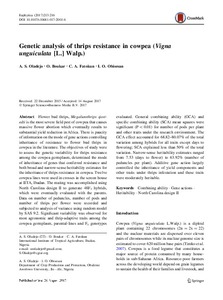Welcome to the International Institute of Tropical Agriculture Research Repository
What would you like to view today?
Genetic analysis of thrips resistance in cowpea (Vigna unguiculata [L.] Walp.)
Date
2017-09Author
Oladejo, A.S.
Boukar, O.
Fatokun, C.A.
Obisesan, I.O.
Type
Target Audience
Scientists
Metadata
Show full item recordAbstract/Description
Flower bud thrips, Megalurothrips sjostedti is the most severe field pest of cowpea that causes massive flower abortion which eventually results to substantial yield reduction in Africa. There is paucity of information on the mode of gene actions controlling inheritance of resistance to flower bud thrips in cowpea in the literature. The objectives of study were to assess the genetic variability for thrips resistance among the cowpea germplasm, determined the mode of inheritance of genes that conferred resistance and both broad and narrow-sense heritability estimates for the inheritance of thrips resistance in cowpea. Twelve cowpea lines were used in crosses in the screen house at IITA, Ibadan. The mating was accomplished using North Carolina design II to generate 48F1 hybrids, which were eventually evaluated with the parents. Data on number of peduncles, number of pods and number of thrips per flower were recorded and subjected to analysis of variance using random model by SAS 9.2. Significant variability was observed for most agronomic and thrip-adaptive traits among the cowpea germplasm, parental-lines and F1 genotypes evaluated. General combining ability (GCA) and specific combining ability (SCA) mean squares were significant (P < 0.01) for number of pods per plant and other traits under the research environment. The GCA effect accounted for 68.82–80.07% of the total variation among hybrids for all traits except days to flowering; SCA explained less than 50% of the total variation. Narrow-sense heritability estimates ranged from 7.53 (days to flower) to 63.92% (number of peduncles per plant). Additive gene action largely controlled the inheritance of yield components and other traits under thrips infestation and these traits were moderately heritable.
http://dx.doi.org/10.1007/s10681-017-2001-6
Multi standard citation
Permanent link to this item
https://hdl.handle.net/20.500.12478/2041Digital Object Identifier (DOI)
http://dx.doi.org/10.1007/s10681-017-2001-6

